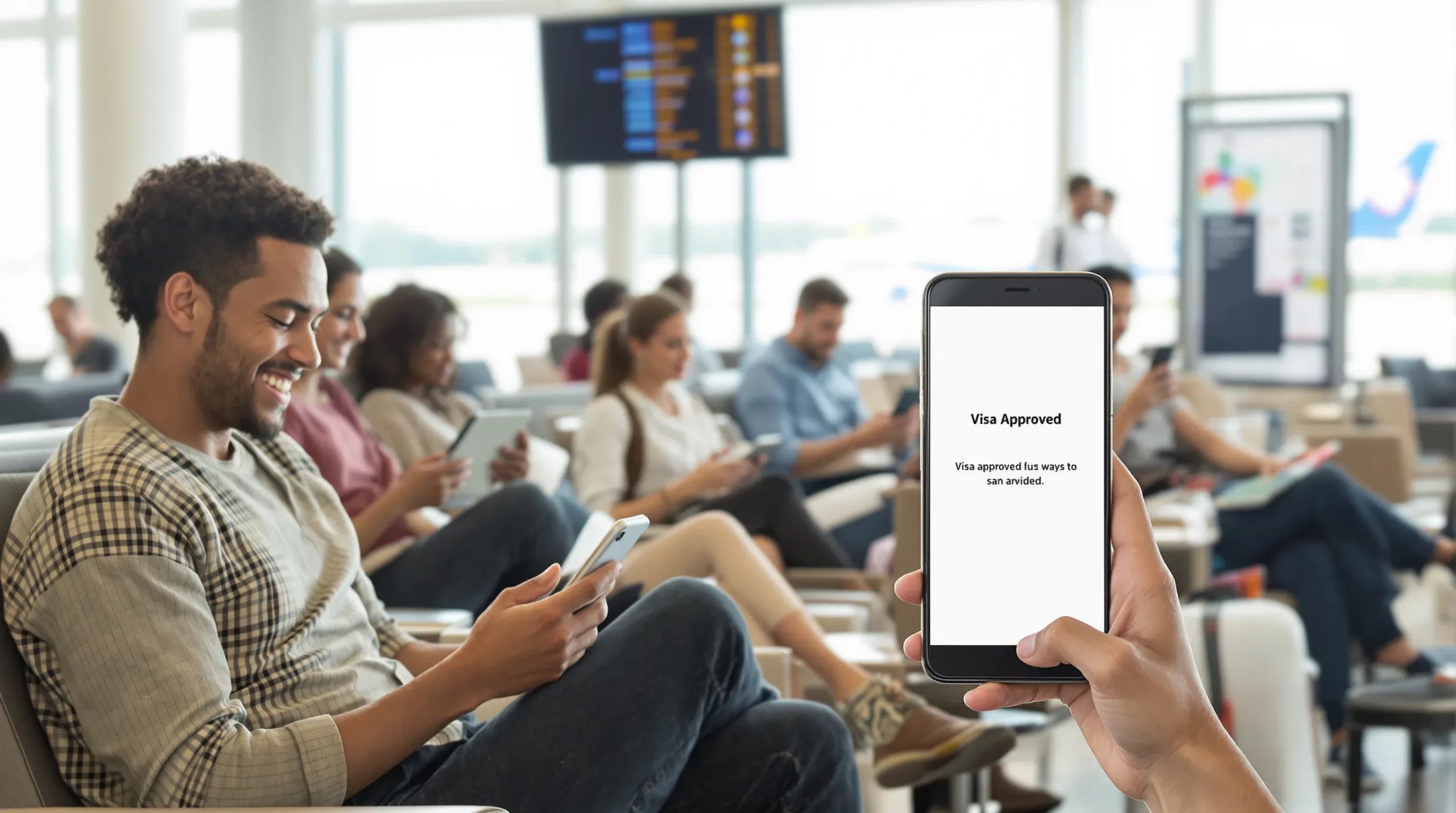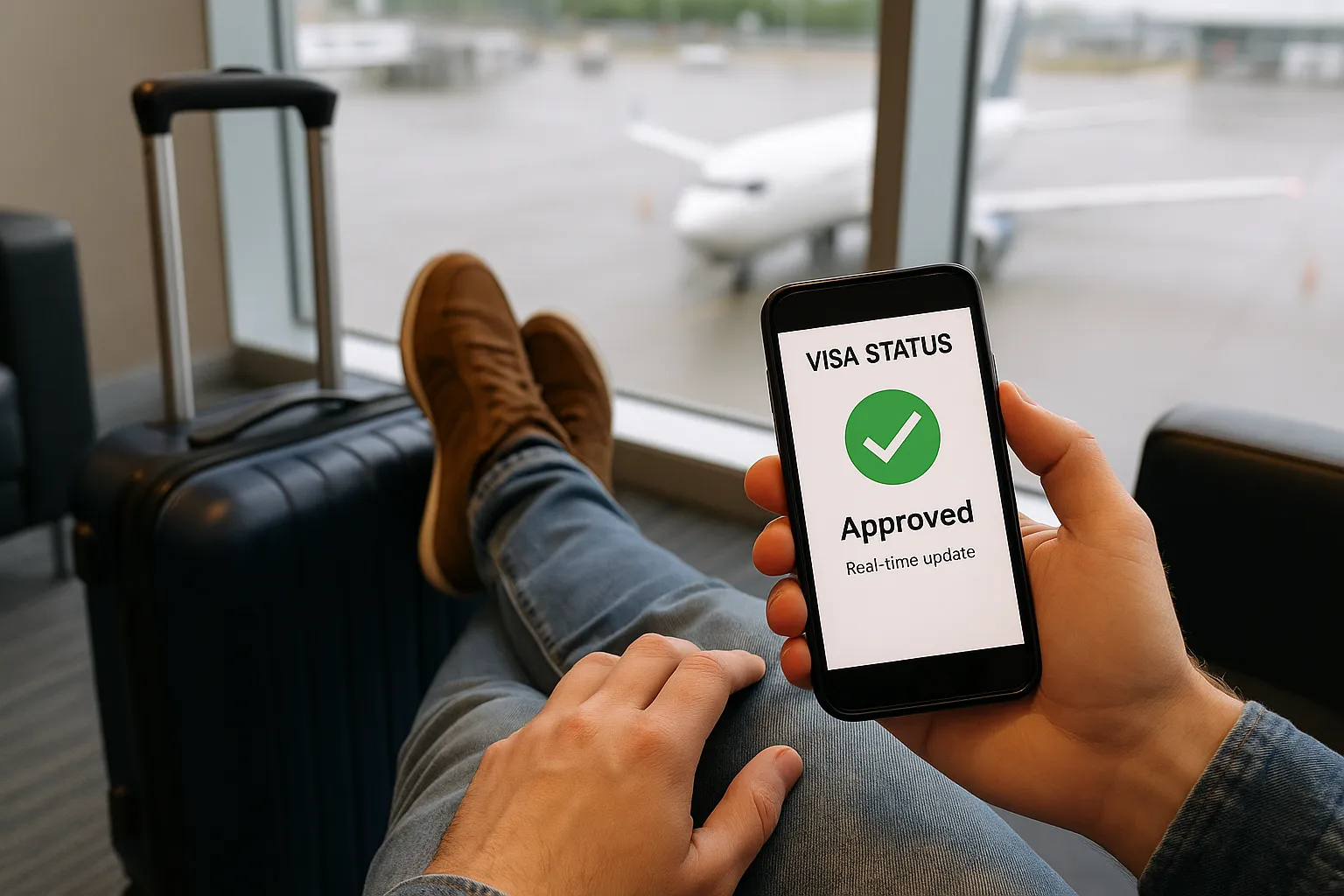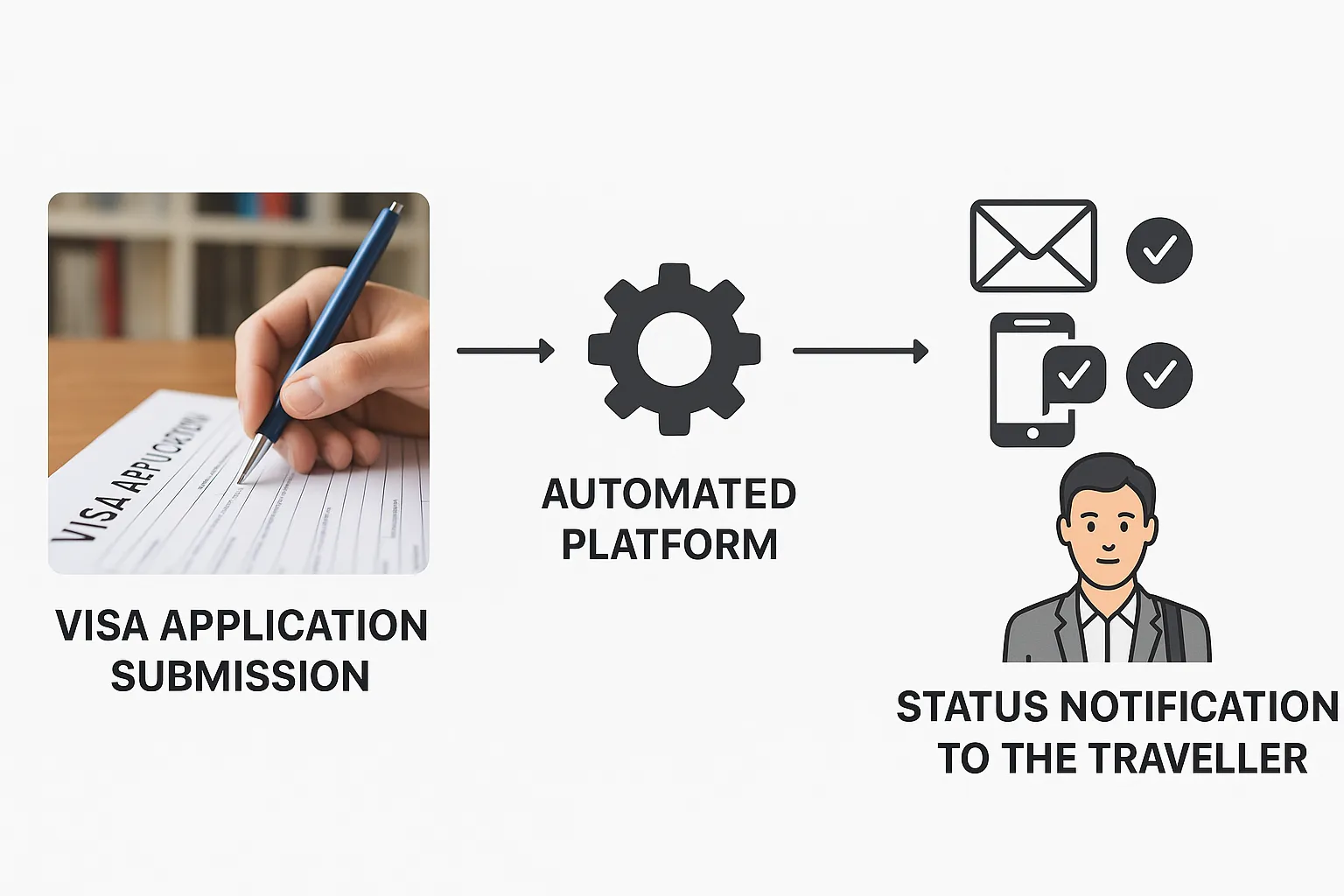Cutting Call Center Volume with Automated Visa Status Notifications

Travellers rarely pick up the phone to praise an airline or OTA when everything is smooth. A large slice of call-center traffic comes from anxious customers asking one thing: “What’s happening with my visa?” For travel brands that sell long-haul itineraries or connect passengers to complex border regimes, those repeat calls translate into mounting operational costs and lower satisfaction scores.
Recent industry data shows the average live-agent call costs US $7–13, depending on geography and handle time (Zendesk CX Benchmark, 2024). Multiply that by tens of thousands of bookings during peak season and the hidden expense quickly rivals a marketing campaign.
Yet there is a proven, low-effort way to eliminate a majority of “status check” enquiries: proactive, automated visa status notifications. This article explains how the strategy works, the measurable ROI it delivers, and the fastest path to implementation using a modern visa management platform.

Why Customers Keep Calling About Visa Status
- Uncertainty gap: Visa processing is opaque. If they don’t see movement, travellers assume nothing is happening.
- High stakes: A denied or delayed visa jeopardises the entire trip, so travellers seek reassurance more often than for seat booking or baggage.
- Poor visibility: Many booking engines still redirect to government portals, leaving customers to guess when—or if—notifications will appear.
Modern customers expect the same granular tracking they get for food delivery. Failing to meet that expectation pushes them to the only real-time channel they know: your call centre.
The True Cost of Each “Simple Question” Call
| Cost Driver | Manual Visa Status Calls | Automated Notifications |
|---|---|---|
| Agent handle time | 4–6 minutes average | 0 minutes |
| Direct cost per enquiry (global average) | US $7–13 | < US $0.01 (SMS/email fee) |
| First-call resolution | Often requires internal escalation | 100 % if data is accurate |
| Impact on NPS/CSAT | Neutral or negative | Positive due to proactivity |
| Opportunity cost | Agents tied up, no upsell | Agents available for revenue-driving tasks |
Sources: Zendesk CX Benchmark 2024; Deloitte Digital Contact Center Survey 2023.
How Automated Visa Status Notifications Work
Automated notifications push real-time application milestones directly to the traveller through email, SMS, WhatsApp or in-app messages. Behind the scenes, a visa management platform tracks every application and triggers event-based updates such as:
- Application received
- Documentation verified
- Pending additional info (with a one-click upload link)
- Visa approved and attached to passport
Because messages are data-driven, they require no human intervention. For travel brands using the SimpleVisa API, implementation is as easy as:
- Add a webhook URL where you want to receive status events.
- Map your customer identifiers (PNR, booking reference, email) to the application ID.
- Configure message templates in the white-label dashboard or via your existing CRM.
That’s it—no new code for each destination or update type.
Measurable Impact on Call-Center Volume
Harvard Business Review research into proactive communication (2023) found that sending timely, relevant status updates can reduce inbound “What’s my status?” contacts by up to 30 %. In the visa context, the reduction is often higher because the subject is binary and emotional.
Example scenario for a mid-size OTA handling 80 000 annual long-haul bookings:
- 35 % of customers require a visa = 28 000 applications
- 25 % of those travelers place at least one status call
- 28 000 × 25 % = 7 000 calls avoided with automated notifications
- 7 000 × US $9 (blended cost) ≈ US $63 000 annual savings
The OTA also freed 330+ agent hours monthly—time re-allocated to high-value concierge services that drive incremental revenue.
Beyond Cost: Customer Experience & Revenue Uplift
- Higher CSAT/NPS: Proactive updates rank among the top three drivers of positive feedback in post-trip surveys (Forrester Travel CX Index, 2024).
- Reduced anxiety leads to lower cancellation rates—particularly important for tours with strict refund policies.
- Embedded upsell moments: When the approval notification lands, attach ancillary offers such as seat upgrades, insurance or airport transfers. Conversion rates are up to 2× higher immediately after good news.
Implementation Pathways
Travel brands have varying tech stacks, so a flexible solution is critical. SimpleVisa offers three options:
- Low-code widget: Insert a status portal directly into confirmation emails or the “Manage My Booking” page.
- RESTful travel API: Pull real-time status into your native notification engine. Ideal for airlines and OTAs with existing MarTech stacks.
- White-label app: A turnkey environment where customers track their application, upload missing documents and receive push alerts—no development resources required.
For brands starting from scratch, the no-code path can go live in under two weeks. Those already consuming airline or hotel ancillary APIs can integrate the SimpleVisa endpoint in the same sprint cycle.
Best Practices for Effective Visa Notifications
- Set expectations early: Provide an estimated approval window the moment the application is submitted.
- Use plain language: Replace bureaucratic terms (e.g., “documentary assessment”) with traveller-friendly phrasing (“We’re reviewing your passport scan”).
- Include a self-service link: Let customers update documents or revise travel dates without agent assistance.
- Localise time stamps: Display dates in the traveller’s timezone and language.
- Offer multi-channel fallback: If an email bounces, send an SMS. If an SMS fails, trigger WhatsApp.
These details can shave thousands of avoidable follow-ups.
Security and Compliance Considerations
Visa data is sensitive PII, so any notification system must comply with GDPR, CCPA and destination-specific regulations. Look for:
- TLS 1.3 encryption in transit and AES-256 at rest
- ISO 27001-certified hosting
- Role-based access controls and audit logs
SimpleVisa’s platform adheres to these standards and passes annual third-party penetration tests.
Counting the Benefits: A Quick ROI Calculator
| Metric | Value Example | Your Inputs |
|---|---|---|
| Annual visa-requiring bookings | 80 000 | |
| Average status calls per booking | 0.25 | |
| Cost per call | US $9 | |
| Calls avoided (bookings × calls) | 20 000 | |
| Annual cost saved | US $180 000 |
Even after messaging fees (< US $0.08 per application) and platform licensing, most clients see payback in under one quarter.
Getting Started
- Audit your call logs: Segment visa-related enquiries to establish a baseline.
- Map touchpoints: Identify where traveller data and status events already live in your stack.
- Schedule a discovery demo with SimpleVisa’s solution team to review API documentation and white-label options.
- Launch a pilot on one high-volume route. Measure call deflection and CSAT uplift over 60 days.
- Roll out globally and layer in ancillary offers to capitalize on the high-engagement moment of visa approval.
For a deeper look at the underlying technology, check out our breakdown of how eVisa APIs work step by step.

Conclusion
In 2025, live-agent support should be reserved for complex edge cases—not routine status checks. By pushing real-time visa updates to travellers, travel brands can slash call-center costs, boost satisfaction and unlock new revenue opportunities. SimpleVisa’s plug-and-play solutions make the transition straightforward, whether you need a quick-turn widget or deep API integration.
Ready to see how much your business can save? Visit SimpleVisa.com or book a personalised ROI session with our team today.